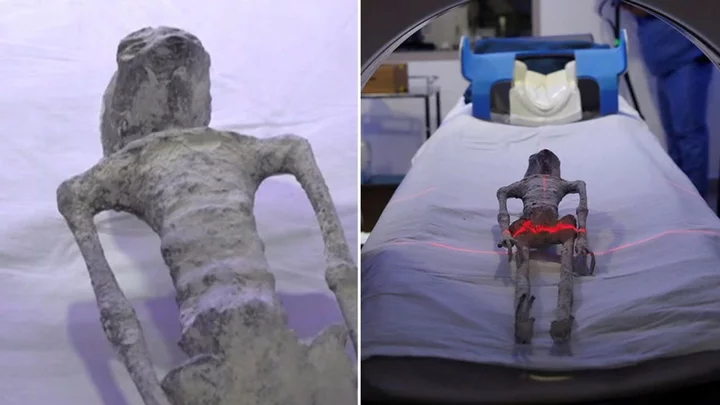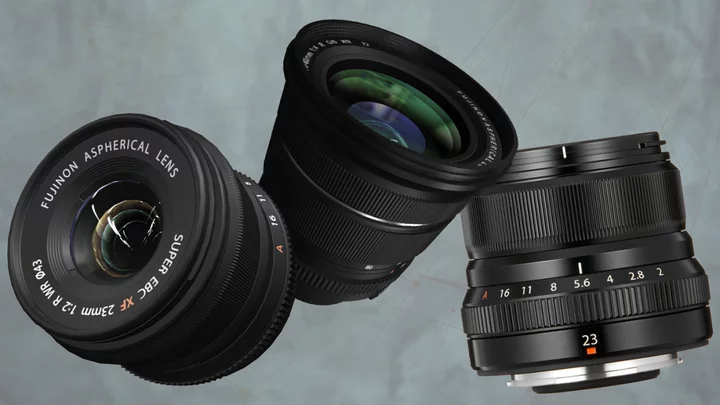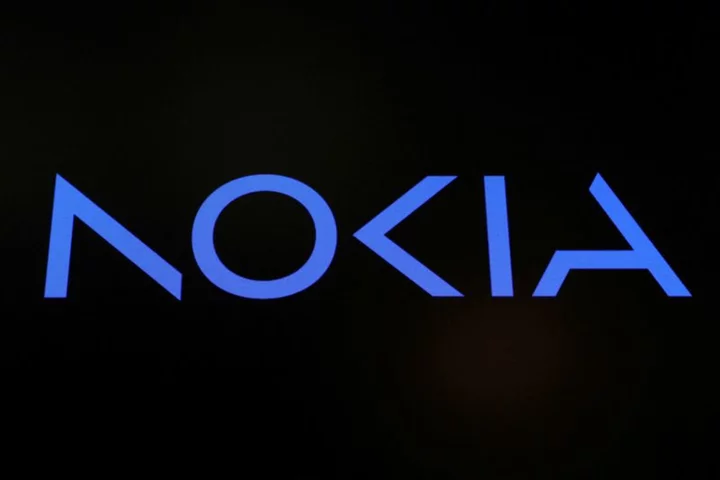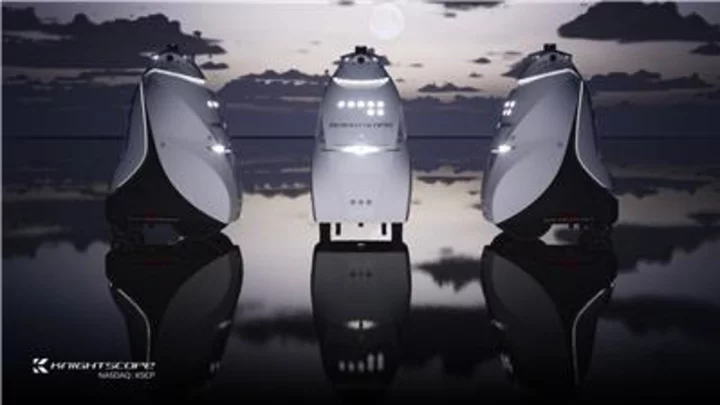
Q4 Inc. Wins Multiple Stevie® Awards in 2023 International Business Awards® Program
TORONTO--(BUSINESS WIRE)--Aug 15, 2023--
2023-08-15 20:25

Scientists confirm that one of Mexican aliens is 'alive' after controversial research
Scientists in Mexico have given their verdict on the supposed 'aliens' that were presented to the country's congress last week. Much controversy existed around the aliens who were presented by a man named Jaime Maussan who has previously been accused of using the mummified beings, apparently found in Peru, as part of an elaborate hoax. Despite spawning dozens of memes, the aliens are apparently being treated seriously enough that they have now been studied by scientists who have said that the figures are ‘single skeletons’ and also have 'eggs' inside of them. The two aliens have been named Clara and Mauricio and have reportedly been studied in a lab at the Noor Clinic in Mexico. Lead researcher Dr Jose de Jesus Zalce Benitez, a former navy forensics doctor, who added that as well as being "a single skeleton" the aliens are also a "complete organic being." He also denied that the aliens were part of a hoax and even said that Clara was "alive, was intact, was biological and was in gestation." However, much like the alien bodies themselves, the research has been clouded in controversy and scepticism as the research has yet to be officially verified, with Nasa scientist Dr David Spergel questioning why the findings haven't been made public, as per the BBC. Spergel said: "He said: "If you have something strange, make samples available to the world scientific community and we'll see what's there." Benitez did add in his address at the press conference: "We are facing the paradigm of describing a new species or given the opportunity to accept that there has been contact with other beings, non-humans, that were drawn and marked in the past by diverse cultures throughout the world." Sign up for our free Indy100 weekly newsletter Have your say in our news democracy. Click the upvote icon at the top of the page to help raise this article through the indy100 rankings.
2023-09-20 16:23

The Best Fuji X Lenses for 2023
Fujifilm is one of the first names of photography, with a history that stretches back
2023-07-29 04:22

CORRECTING and REPLACING Clarify Health Launches Generative Artificial Intelligence, Clara
SAN FRANCISCO--(BUSINESS WIRE)--Jun 6, 2023--
2023-06-07 09:28

A near-mint iPad Air, Beats earbuds, and accessories for $100
TL;DR: As of September 4, get a refurbished iPad Air and Beats Flex Headphones bundle
2023-09-04 17:26

HMD starts making Nokia phones in Europe, launches 5G smartphone
By Paul Sandle LONDON (Reuters) -HMD Global, which makes Nokia-branded phones, has become the first major smartphone company to manufacture
2023-10-03 21:17

Most in U.S. say don't ban race in college admissions but that role should be small: AP-NORC poll
As the Supreme Court decides the fate of affirmative action, most people in the U.S. say the court should allow consideration of race as part of the admissions process
2023-05-30 12:54

Once a reliable cash cow, Amazon's cloud business slows as companies pull back on service
Amazon is kicking off its annual security-focused cloud computing conference on Tuesday amid a slowdown in its profitable cloud business Amazon Web Services, or AWS
2023-06-13 18:28

Instacart reveals 31% revenue jump in road to long-awaited IPO
By Niket Nishant (Reuters) -Grocery delivery app Instacart on Friday revealed a 31% jump in revenue for the first half
2023-08-26 03:50

Knightscope Secures Contract from Texas Semiconductor Company
MOUNTAIN VIEW, Calif.--(BUSINESS WIRE)--May 17, 2023--
2023-05-17 21:45

Exclusive-Amazon has drawn thousands to try its AI service competing with Microsoft, Google
Amazon.com’s cloud division has drawn thousands of customers to try out its service vying with Microsoft and Google
2023-07-26 23:58

Tragic NBA star Kobe Bryant honorued with 2k24 cover
Kobe Bryant is to honoured on the cover of NBA 2k24.
2023-07-07 20:17
You Might Like...

Andrew Tate mocks Dua Lipa in latest tweet, says pop singer 'is into girls'

The Best Noise-Cancelling True Wireless Earbuds for 2023

Tristan Tate applauds MrBeast's remarkable one-year fitness journey, calls it 'good for the world' as fans say 'you guys need a collab'

Analysis-For retail investors, jumping on Arm's blockbuster IPO is a risky business

EU Looks Into Blocking Out the Sun as Climate Efforts Falter

Where is Halsin in Baldur's Gate 3?

Grand Theft Auto 6 publisher thinks video games should be charged by the hour

Call of Duty League Champs 2023 Results Tracker
